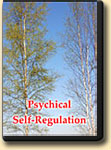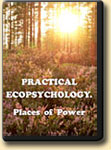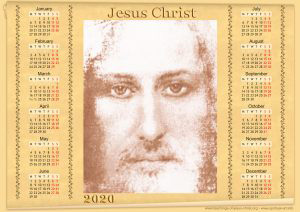The Highest Yoga
|
Eco Life:
|
Places of PowerNow we are going to discuss a very interesting ecological phenomenon, which has a great significance for spiritual work. This is so called places of power. This term was introduced by Juan Matus; we discussed His Teachings in detail in the book [20]. Places of power are geographic zones, sometimes large, sometimes small, which possess energy fields that are of significance for people. It should be noted right away that there is a similar and sometimes closely related phenomenon — energy fields created by plants and technical devices (transformers, high voltage lines and so on). Places of power may be found on the surface of the Earth, underground (for example, in the subway), above the surface, as well as in water reservoirs. The nature of the majority of places of power can be explained as follows. The Earth (as a planet) is a multidimensional structure. In it, all manifestations of the multidimensional space are present — from the physical matter — to the plane of the Creator. Depending on the structure of the crystal lattice of the Earth as a whole or of some parts of its crust, the energy fields of certain spatial dimensions in certain places may dominate or, on the contrary, may be manifested weaker. So places of power look like “holes” in dense spatial dimensions “filled” with the energy of a certain subtle energy layer. According to Juan Matus, places of power are subdivided into positive and negative ones. To the first category He assigned the places which give their energy to people, to the second — the places which take energy. However our experience demonstrates that the first ones are not necessarily favorable and the latter — unfavorable. For example, there are places of power that take away energy, and this can be used for purging the organism of coarse, pathogenic energies, that is for healing. And vice versa, some places of power possessing excessive energy are detrimental rather than beneficial if their energy is coarse or contains undesirable informational characteristics, inducing, for example, anxiety, depression and so on. This is why it is better to subdivide places of power into positive and negative ones according to the criterion of their objective significance. In this case places with excess of unfavorable energies belong to the category of negative places of power. It is necessary to point out that some authors sometimes try to define places of power through the terms abnormal or geopathic zones. This is not right. They are not “abnormal”, i.e. “incorrect”. All the more, neither fits all places of power in the term geopathic zones that are “inherent-to-the-Earth zones that cause diseases”. Places of power can be found with the help of divining rods and pendulums. But, contrarily to a developed consciousness these tools provide very poor information about this phenomenon. With the help of a divining rod or pendulum one can only say that here is a place of power, only that “there is something over here”. The biolocation method in this case is akin to the situation when a poor-sighted person tries to determine whether it is light or dark here. But a person with normal vision perceives the whole spectrum of colors, and not only colors but also the emotional quality of their combinations and iridescence, and sees life in them! This is the difference between mechanical, instrumental determination of the energy gradients on places of power and perceiving them directly with one’s own organism through attuning oneself as a developed consciousness with their multidimensional manifestations. Places of power are, truly, multifarious! There are places that selectively activate anahata, or vishudha, or the front meridian, giving us bliss. And there are places causing “hypertrophied” sense of one’s “I” — inflated and arrogant! One may show the disciples how disgusting such an “I” is — so that they learn not to become like this. There are also places that cause “unmotivated” joy, laughter in everyone present there. Also there are places of power depleting people energetically; this can result in “dead” tiredness and diseases if one settles there to live or just to take a rest. On other places, one can heal oneself, quickly restore one’s strength. About 50 kilometers from Saint Petersburg, there is a negative place of power approximately 100 meters in diameter inducing a strong feeling of sadness and loneliness. Unfortunately this place covers a part of a village. The destiny of the families settled here is pitiable: on this place it is not possible to experience any joy of communication with each other… Still other places of power induce anxiety, fear. A person who understands the reason can take just a few steps backwards. But an ignorant one can easily fall a prey to mystical horror. There also exist places that cause aggressiveness, the state of “drunken animosity”. And so forth. (Other examples can be found in the book [20,22]). So we see that this knowledge can make the life of each one of us easier, while ignorance can result in a lot of unnecessary difficulties. Knowledge allows one to use negative places of power for good. For example, we used in our work the place of “loneliness and sadness” mentioned above for cognizing the state of solitariness. Not loneliness of one’s body in isolation from other people but the state of being solitary in front of the Creator — that is detachment from everything earthly, when I remain with Him face-to-face in the Ocean of the multidimensional universe. * * * Therefore, negative places of power can be subdivided into two groups: 1) those draining the energy needed by the organism; 2) those creating undesirable psychical states. Now let us list the variants of positive places of power. The first group is the places of power containing a surplus of favorable energy, which they easily give to people. In some cases this energy can be more subtle, in others — less subtle. Sometimes there is a narrow range of energies which differ by the criterion of “subtlety-coarseness”, sometimes — a wide range. The energy, which is not sufficiently subtle, can be used by means of moving it around the microcosmic orbit and sublimating it this way into subtler energies. And these subtler energies can be used for filling the organism, and thus for performing crystallization. That is the energy for crystallization can be obtained not only from food: one can get it directly from space on places of power. The second group of positive places of power consists of those which activate and develop a certain energy structure of the organism (a chakra, a meridian, or something else), and produce thus useful activation of the emotional-volitional or intellectual function of the organism. In the third group there are places of power allowing a consciousness to assume certain form (or, in the language of Juan Matus, shifting the location of the assemblage point). Such a quality allows one to train mobility, “elasticity” of the consciousness, developing oneself as a consciousness — active and strong. Places of power of the fourth group shift the consciousness (provided it is sufficiently developed) into a certain spatial dimension. This is also a kind of gymnastics for consciousness. Juan Matus said that prior to starting really large, serious work, a seeker has to shift the assemblage point tens of thousands of times. The consciousness has to become mobile, moving easily along the whole scale of the range of emanations within the multidimensional space, become capable of acting at any distance. This is what a developed consciousness is! The fifth group corresponds to the places of power which imprint in themselves the state of a person (or people). Such are, for example, places of power formed in places of meditations or on the graves of spirituality highly advanced people*. And there are places of power which are working sites of Divine Teachers. (See more details about this in [20,22]). Places of power exist everywhere. I came across them in Moscow, Saint Petersburg, Warsaw, Prague, in towns, in woods, in swamps, in mountains. … A question may naturally arise: how to find them? The first thing to do is to move the consciousness out of the head; the mind has to be silent. Secondly, during this we have to search for God, the Path to Him rather than solving our earthly problems. Thirdly, in the beginning of such practice the following technique may prove helpful. Let us feel ourselves dressed in wide, bell-formed skirts, which start right from the neck. Then fill the space under these skirts with ourselves. Draw also the heads (of consciousness) under the skirts. And in this state roll easily along the surface of the Earth, among fields, meadows, woods… This is it — a wonderful lesson in the ecology of multidimensional space! * * * Ecology is the science that studies relationships of an organism with its environment. There is ecology of plants, ecology of animals, ecology of human being. The task of the latter, in the higher sense, is to establish the Harmony of each person with the entire environment, including other people, air, water, all forms of life around, God. The art of psychic self-regulation as a powerful means of such harmonization may be considered as one of the practical methods of the ecology of human being. Vladimir Antonov, Ph.D. (in biology) Translated from Russian |
|


















